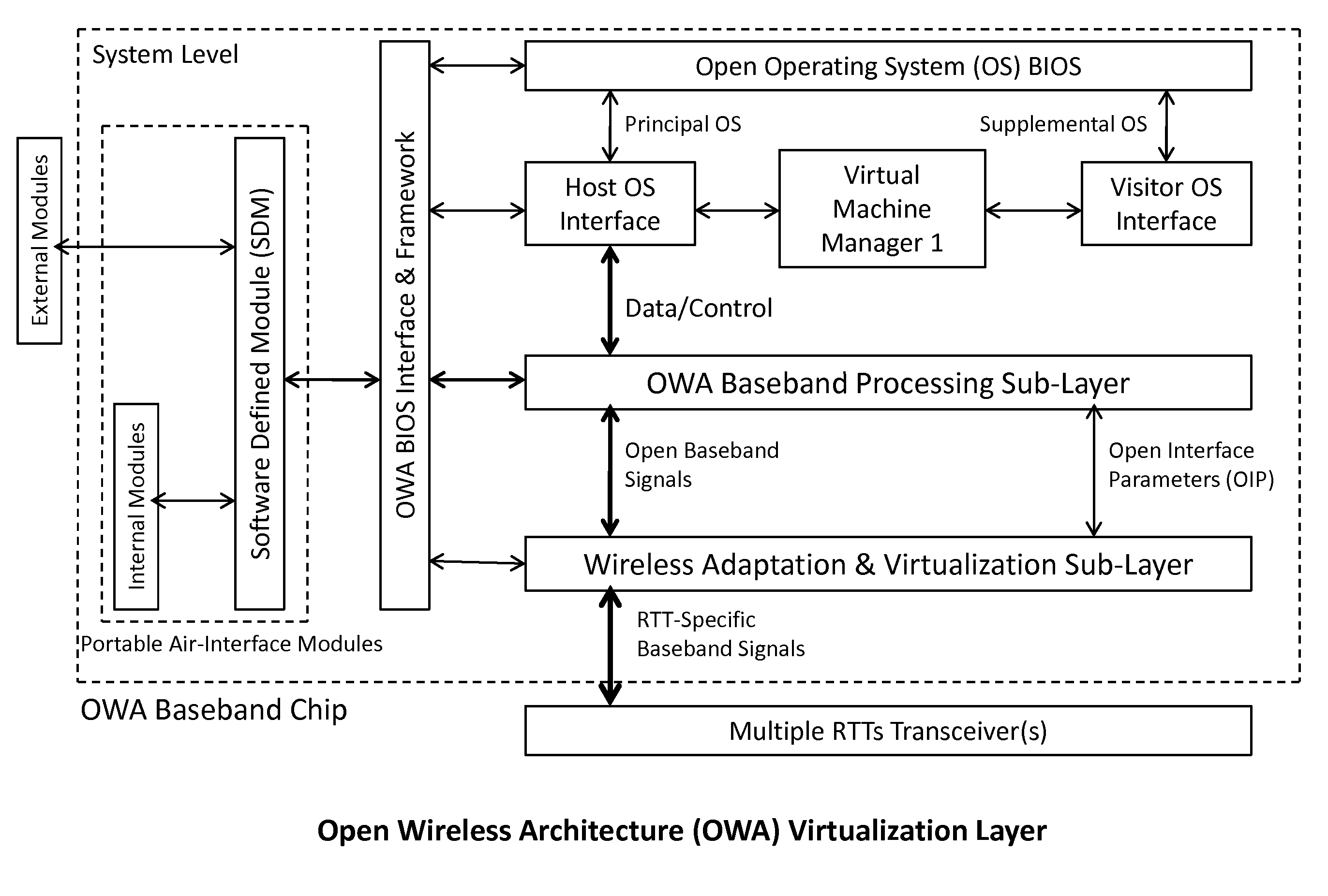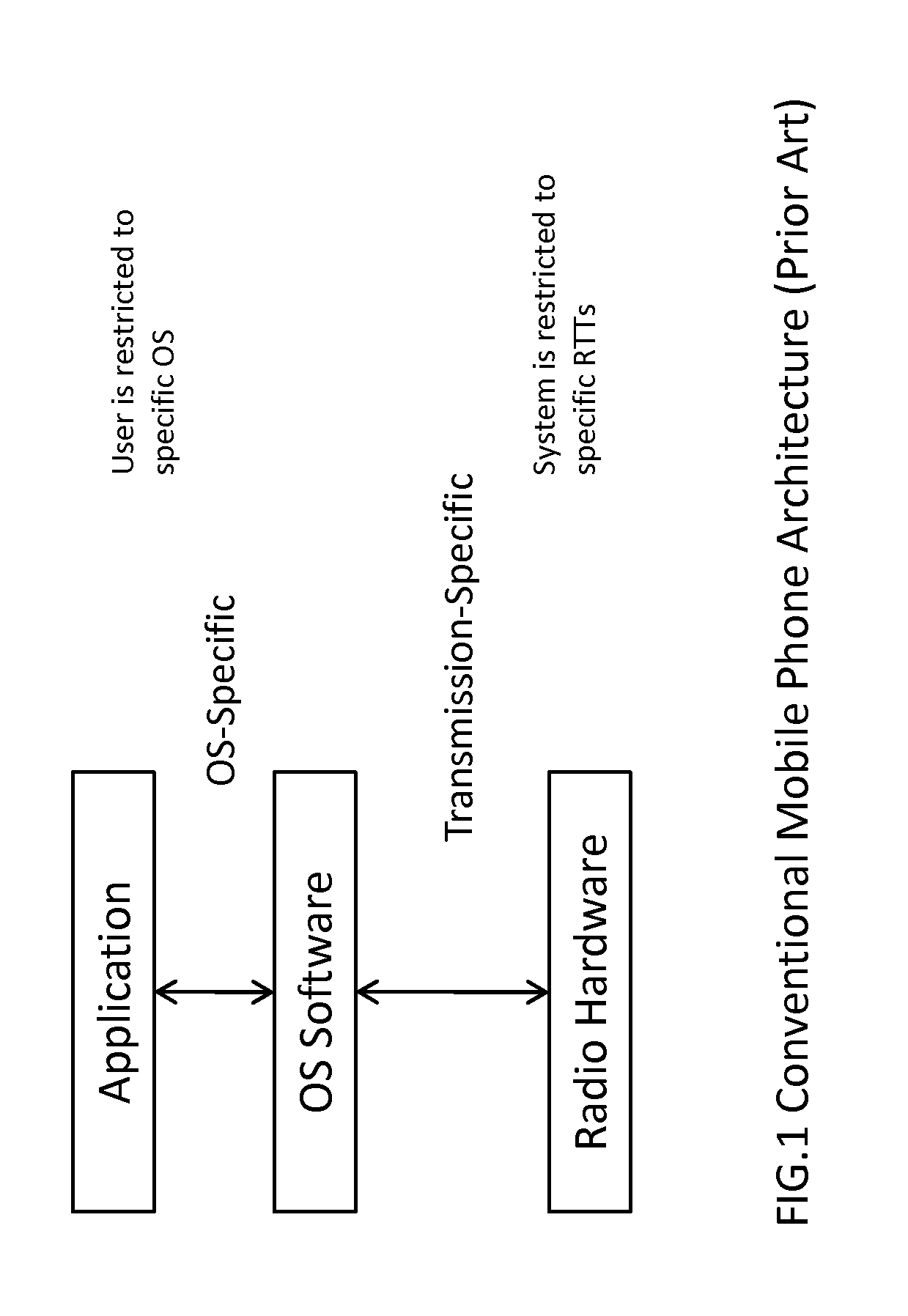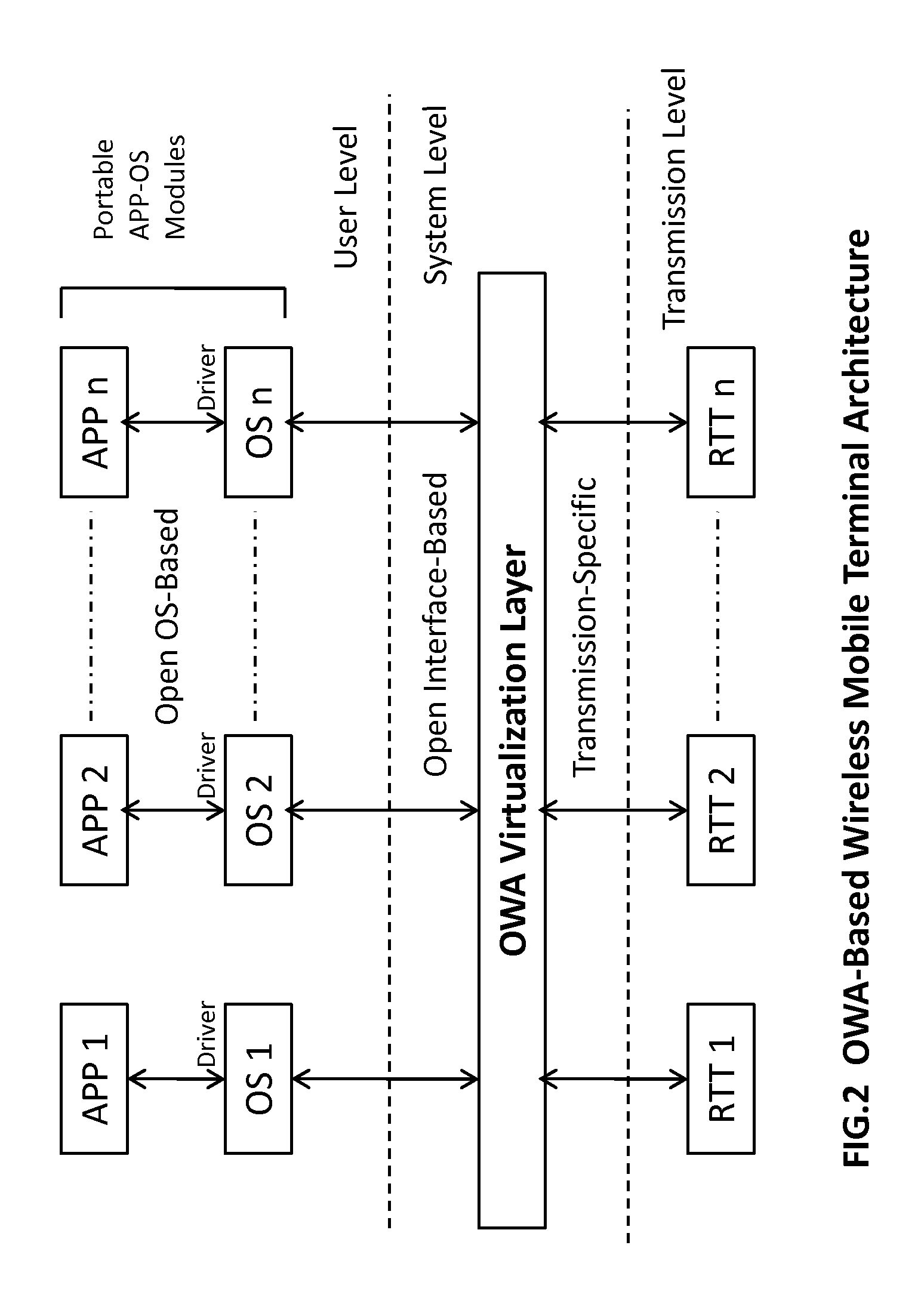Open wireless architecture virtualization system for wireless mobile terminal device
a virtualization system and wireless mobile terminal technology, applied in the field of open wireless architecture virtualization system for wireless mobile terminal device, to achieve the effect of system flexibility in movemen
- Summary
- Abstract
- Description
- Claims
- Application Information
AI Technical Summary
Benefits of technology
Problems solved by technology
Method used
Image
Examples
Embodiment Construction
[0069]The present inventions now will be described more fully hereinafter with reference to the accompanying drawings, in which some examples of the embodiments of the inventions are shown. Indeed, these inventions may be embodied in many different forms and should not be construed as limited to the embodiments set forth herein; rather, these embodiments are provided by way of example so that this disclosure will satisfy applicable legal requirements. Like numbers refer to like elements throughout.
[0070]The invention is described below in sections for the sake of clarity. First, the conventional architecture is described in order to make it easier to see the unique features of the invention by way of comparison. Then, the detailed system architecture according to the invention is described as a whole. Finally, the main novel features of the invention are described individually.
Conventional Wireless Mobile Phone architecture
[0071]FIG. 1 illustrates the conventional mobile phone archi...
PUM
 Login to View More
Login to View More Abstract
Description
Claims
Application Information
 Login to View More
Login to View More - R&D
- Intellectual Property
- Life Sciences
- Materials
- Tech Scout
- Unparalleled Data Quality
- Higher Quality Content
- 60% Fewer Hallucinations
Browse by: Latest US Patents, China's latest patents, Technical Efficacy Thesaurus, Application Domain, Technology Topic, Popular Technical Reports.
© 2025 PatSnap. All rights reserved.Legal|Privacy policy|Modern Slavery Act Transparency Statement|Sitemap|About US| Contact US: help@patsnap.com



